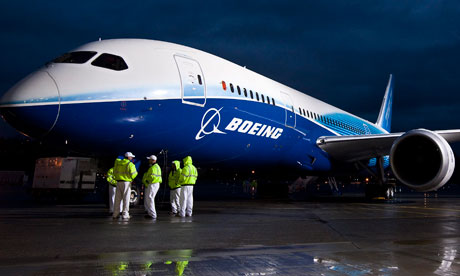Aircraft engine manufacturer Pratt & Whitney is building its first manufacturing plant in Singapore.
The facility will produce new generation engine components to meet increasing demand for commercial engines.
The Economic Development Board (EDB) said the facility will create "new opportunities for Singaporeans".
Even before operations start at its component repair facility in Seletar, Pratt & Whitney has broken ground to develop its latest manufacturing facility next door.
The company said initial production at its component repair facility will begin in the fourth quarter 2013 followed by a grand opening in the first quarter of 2014.
The US-based aviation firm believes this will create synergies for its aircraft engines and component repair business.
The company has invested US$110 million to develop both facilities.
Mr David P. Hess, President of Pratt & Whitney, said: "Some of it may be longer term but the growth will come. Initially we'll be making OEM (Original Equipment Manufacturer) parts here. They'll go into engines, sooner or later those engines will be on airplanes, they'll need service and repair, they'll come back to Singapore again."
The new manufacturing facility will produce commercial fan blades and high pressure turbine disks.
The company said the facility will start producing commercial fan blades in 2015 and high pressure turbine disks in 2016.
These components will power next-generation engines for aircraft like the A320neos, which are already on the order books of Jetstar & AirAsia.
The EDB believes this bodes well for Singapore as demand for regional air travel grows.
Singapore's aerospace industry already saw a 10 per cent on-year growth to S$8.7 billion in 2012.
This was despite the global economic downturn in recent years.
Mr Lim Kok Kiang, Executive Director, Transport Engineering at EDB Singapore, said: "In the short term, there will always be economic uncertainties but the aerospace is a long-term industry. An engine that is put out there will be in production, in use for the next 20, 30, 40 years. So from that perspective, on a long-term basis we are very optimistic about the growth of the industry in Singapore and in Asia."
Pratt & Whitney said they expect to see Singapore's manufacturing unit contribute 50 per cent of its global volume output by 2020.
Several of its competitors have been also been expanding their footprint here.
Rolls Royce opened its S$700 million campus last year, housing R&D, training, assembly and manufacturing operations.
Fokker Services Asia, too, opened a new facility for regional aircraft heavy maintenance and support in February last year.
SOURCE
What I like about Singapore is its great ability to attract foreign companies to invest here, especially when it's high technology sector. This new plant will no doubt create jobs for locals and bring in more foreign expertise to boost the local economy.
It's the second foreign plant to be newly built in Seletar Aerospace Park after Rolls Royce. My ground school location is situated directly opposite this new building and I see lots of potential in Seletar being an aerospace hub. There is definitely more exciting times ahead.









